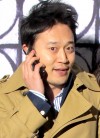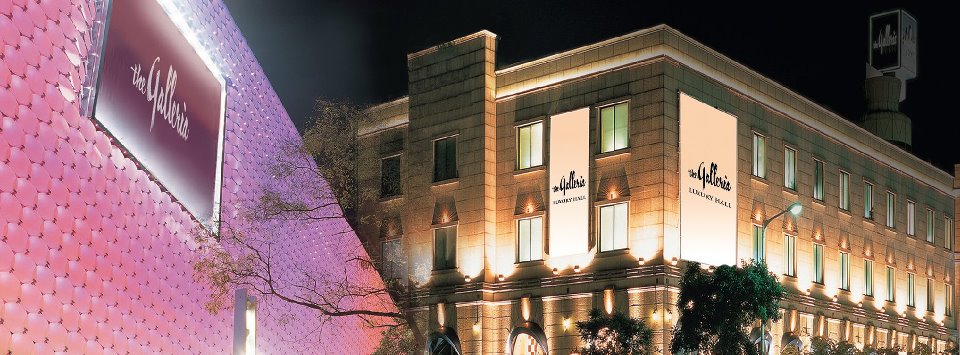Kang Segoo
HANWHA GALLERIA LUXURY HALL, womens fashion team, Buyer
2006.2 Graduated from KOREA UNIVERSITY majoring Japanese and Japanese literature
(2004.4-2005.2 EXCHANGE STUDENT IN JAPAN)
2008.4-2012.8 LIE SANG BONG paris, International business manager
(2009.4-7 TOKYO STAYING FOR BRAND PR AND SALES)
2012.9- HANWHA GALLERIA LUXURY HALL, womens fashion team, Buyer

Segoo Kang, buyer for the Korean Hanwha Galleria Luxury Hall, was invited by JETRO to attend the opening of the Mercedes-Benz Fashion Week TOKYO 2013-14 A/W. Employed by this department store which acts as leader for the Korean fashion industry, it has continued to introduce Korea to luxury brands and trend-setting designer brands from across the globe. With his strong connections to the Japanese fashion scene, we decided to ask Mr. Kang about his impressions of Japanese fashion, as well as the current state of the Korean fashion scene and what the future held in store for Japan-Korea relations.
On this occasion you’ve been invited by JETRO as a buyer, but have you spent much time in Japan?
I spent a year in Japan as an exchange student back in my university days, and have also lived in Tokyo for about three months after my employment. At the time, I was working at the brand Lie Sang Bong, and my job was overseas brand expansion. As you might know, Lie Sang Bong is one of the top brands in Korea, and regularly reveals their collections during Paris fashion weeks.

Hanwha Galleria
When did you begin working at the Hanwha Galleria?
September 2012, and this was also my first time working as a buyer. Since my previous position required that I visit many Western exhibitions and look at various brands, I wanted to use experiences like that which I had gained working at a brand in beginning my career as a buyer – on the other side of the table, so to speak. I am now the buyer for women’s wear at the Hanwha Galleria Luxury Hall East, which deals in luxury brands from areas such as Europe.
Could you tell the Japanese readers a little about the Hanwha Galleria?
The Hanwha Galleria is a department store specializing in luxury and designer brands from all around the world, including fashion centers such as Paris, Milan, London, and New York. It is split into two Halls, with the East Hall dealing with international luxury brands such as Louis Vuitton, Gucci, Chanel, and Hermes, while the West Hall is aimed more at young trendsetters, showcasing contemporary import brands and domestic brands at about a seven to three ratio. Brands are lined up within each Hall, much like a boutique, with special sales areas designed by buyers as well. The Galleria is well known within Korea as a department store which seeks out and introduces the next trend-setting brands ahead of the curve. In that sense, you could call it an incubator for the next big thing in the Korean fashion industry.
What are the differences in store styles and customers between the East and West Halls?
While the layouts do not differ by much, the impression is very different indeed due to the difference in brands displayed. The average customer in the East Hall is in their mid-thirties or above and has a little more money to spend, while the West Hall usually attracts younger customers and is less imposing, so to speak. Since the Galleria itself is set in the Apgujeong district, which is similar to Japan’s Omotesando in that they are both popular spots for trend-conscious fashion aficionados, it is featured in many travel guides, meaning a number of customers come from nearby countries such as Japan or China.
What do you feel is the recent attitude toward fashion in Korea?
Well, while before there was little acceptance or interest toward newer things, I believe Koreans have become more open-minded about the latest foreign imports. Particularly for the younger generation, they adopt all sorts of fashion styles in finding their own look. With the availability of information online about overseas collections, many people do their own research instead of waiting for someone else to tell them what is “in.” While fashion awareness may not be as widespread as it is in Japan, I feel that fashion consciousness has begun to increase in Korea, which has led to a rise in the previously miniscule number of select shops. Lately, there have even been stores coming out which deal exclusively in Korean brands.
Are the number of domestic fashion brands and designers increasing as well?
I think so. With the rise in support by local and national governments toward fashion, conditions have become very favorable for designers just starting out. Naturally, this has also increased the number of designers who expand overseas. Just looking at the Seoul Fashion Week, there are between fifty to sixty brands participating each year, and everyone in the industry is working to help fashion thrive in Korea.
What were your thoughts on being invited to Japan for this event?
Well, this is my first time visiting for the Tokyo Fashion Week, but since I’ve always wanted to become a mediator in bridging the fashion industries of Japan and Korea, I was very excited when I received my invitation from JETRO.
What comes to mind when you think of Japanese fashion?
I feel there are many unique brands in Japan, with bolder designs, styles, and color choices when compared with Korea. The country as a whole is very accepting of fashion, and individuality is treated with high regard. I spoke earlier about how the people of Korea are just beginning to become more accepting with regard to fashion, but with Japan, it seems this acceptance has already come to fruition.
Do you believe Japanese fashions can be accepted in Korea?
Actually, there are already several Japanese brands which have become popular in Korea, such as ZUCCa. However, since Korea is less open toward unique fashions, it may be difficult for Japanese brands to gain widespread acceptance. While I would like to see designs that are already the norm in Japan become used in Korea, there is always concern over whether such designs would actually sell. The simple fact is that there is less worry when taking in brands which have already achieved worldwide popularity. As a buyer, I think it is more important to find Japanese brands or designers with a global market in mind to introduce to the Korean market, instead of bringing in Japanese local designs as they are.
That topic seems unavoidable for Japanese brands or designers considering overseas expansion.
It just might be. While there might be standalone items, say a jacket or a blouse, which could be accepted by people in Korea, it’s not that simple. It’s difficult to sell an item on its own, as there is the concept behind the brand as a whole to consider. But on the other hand, you cannot ensure sales if pieces of varying type, materials, or patterns are bought as a set. It’s very hard to strike a balance there. Still, I believe that Koreans will become ever more open-minded about fashion in the future, and I personally want my job to be one where I bring all types of brands to and from Japan and Korea.
Is there anything specific you are doing now, or would like to do in the future, to meet this goal?
For starters, there are definitely Japanese brands which could make it in Korea, even if they are not as popular in places like Paris or New York. In fact, there are already Korean brands that are doing better in Japan than domestically, such as FLEAMADONNA. Coincidentally, I went to their show a little while before this interview. There may even be brands in the future which gain success in Japan before gaining acceptance in Korea, and I definitely would like to have a hand in seeing such success stories come about. My wife, who is Japanese, had a long career working in fashion in Tokyo. She is now working as an agent for distribution of Korean brands in Japan. Amongst the buyers at the Galleria, I have the most familiarity with Japanese fashion. I wish to work together with my wife in using our networks and connections in Japan to help bridge the gap.


